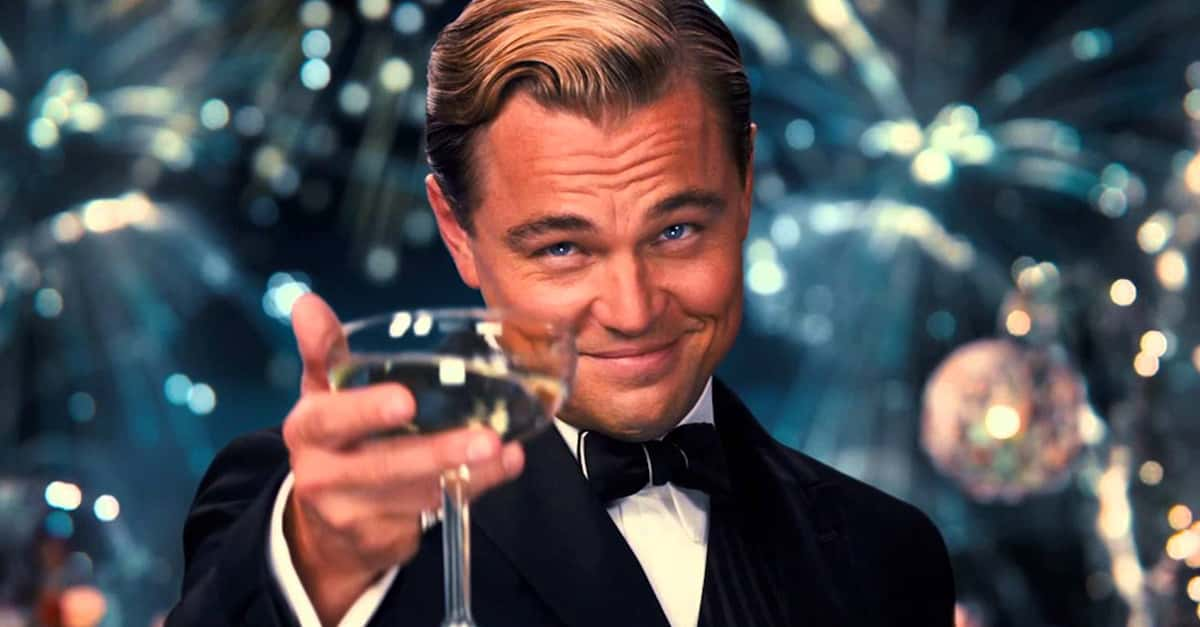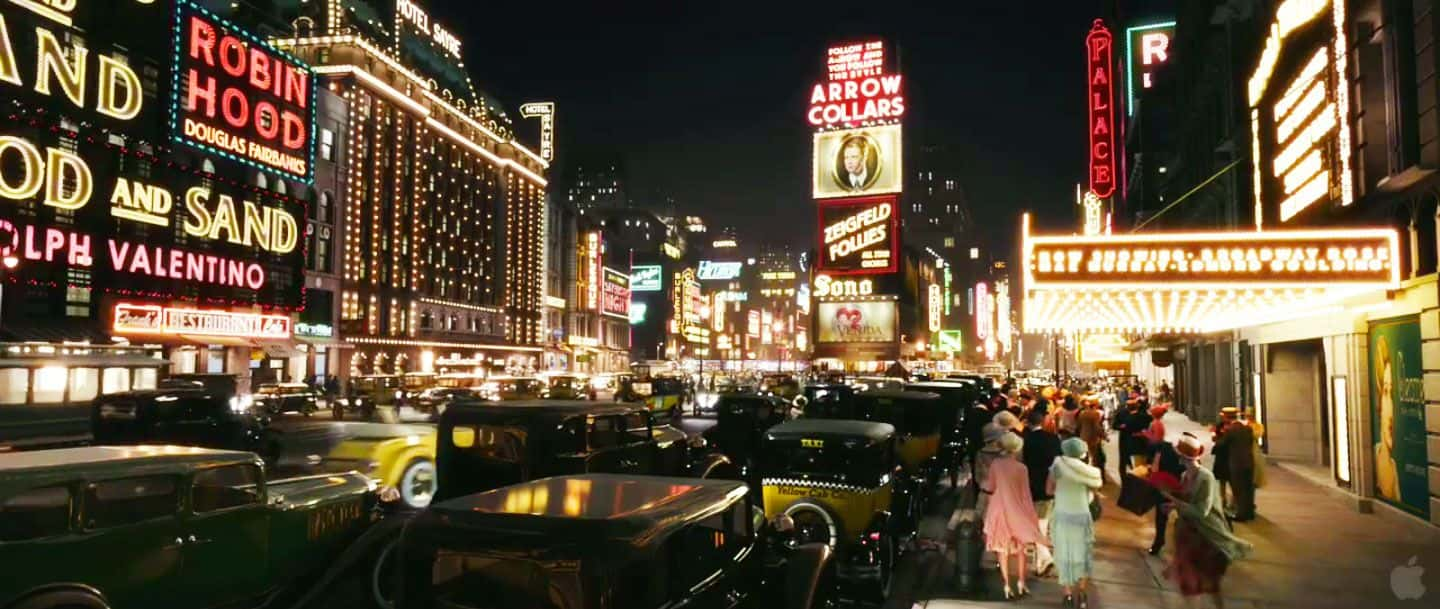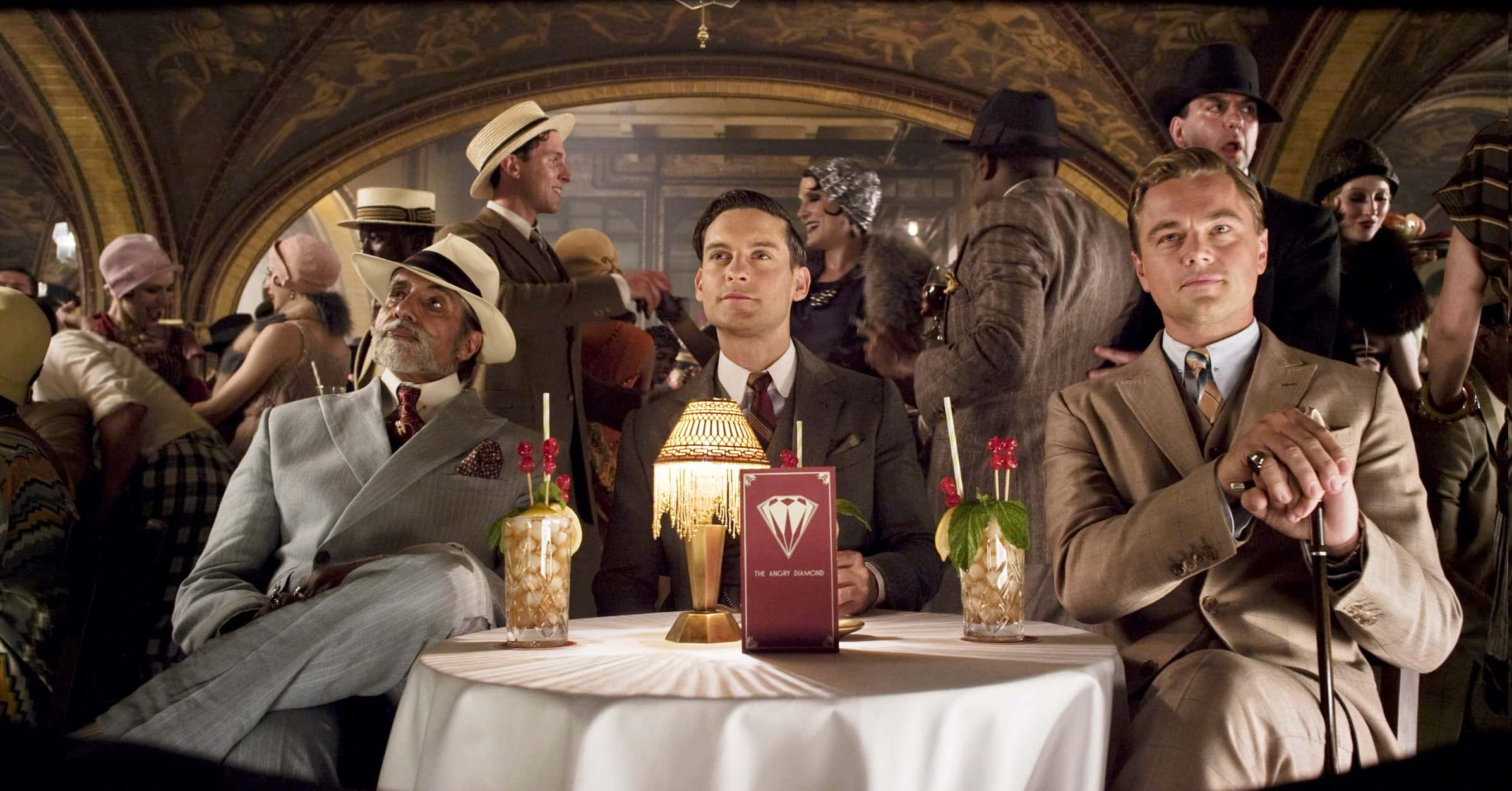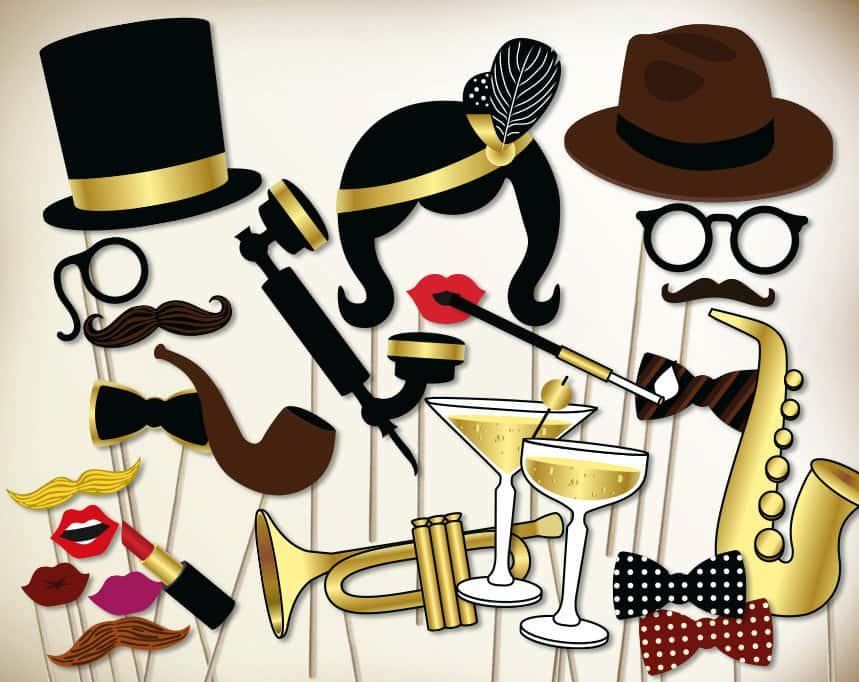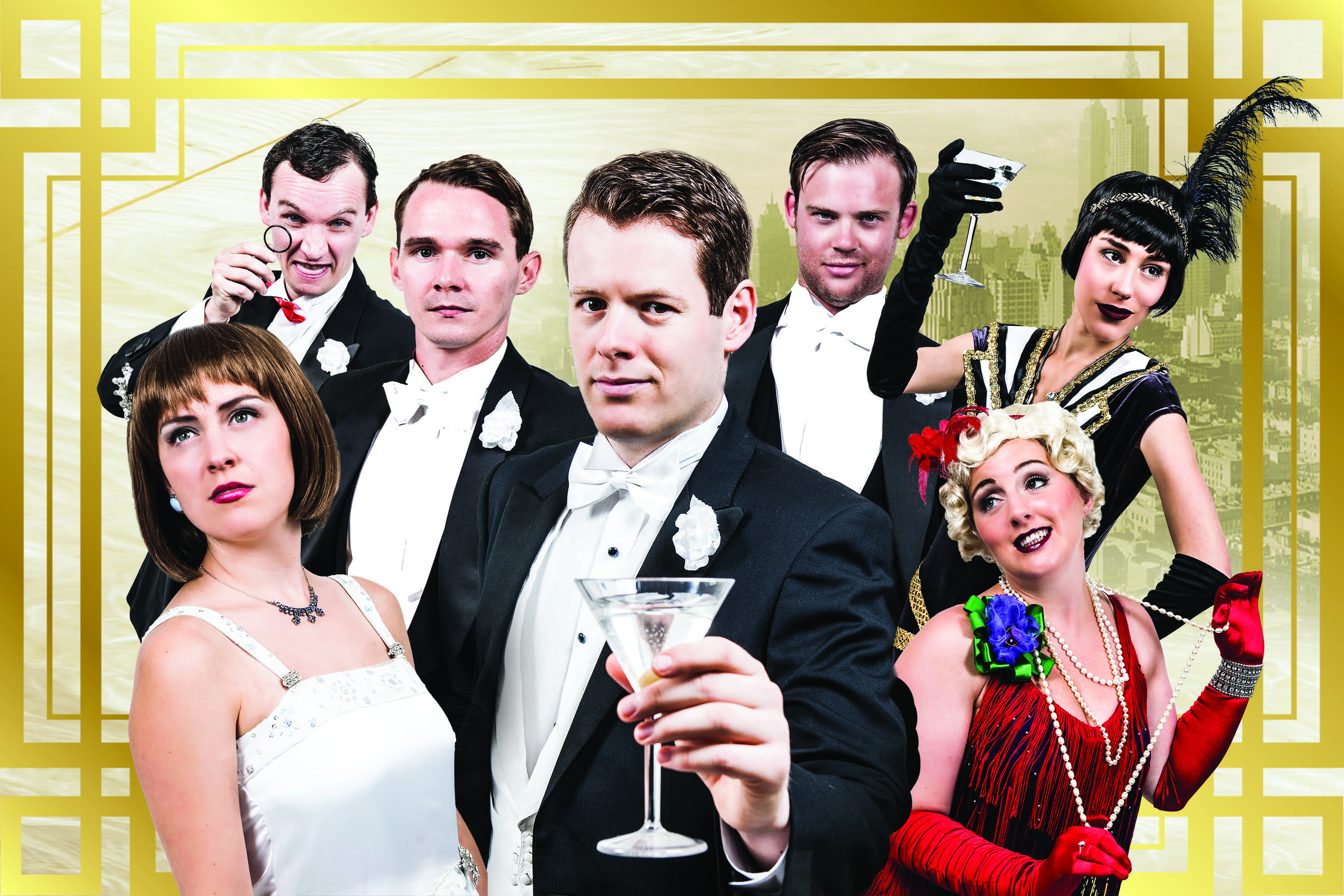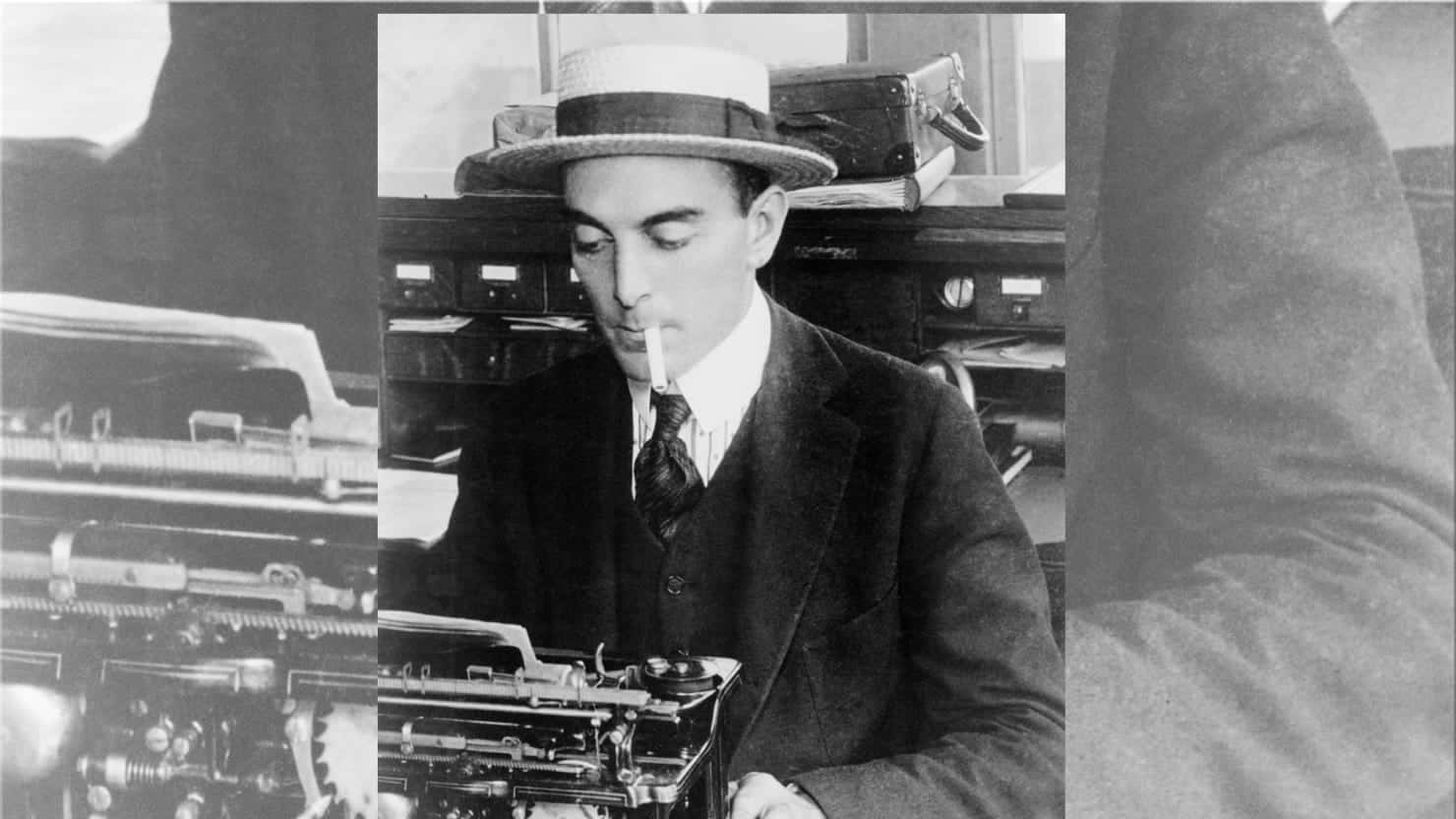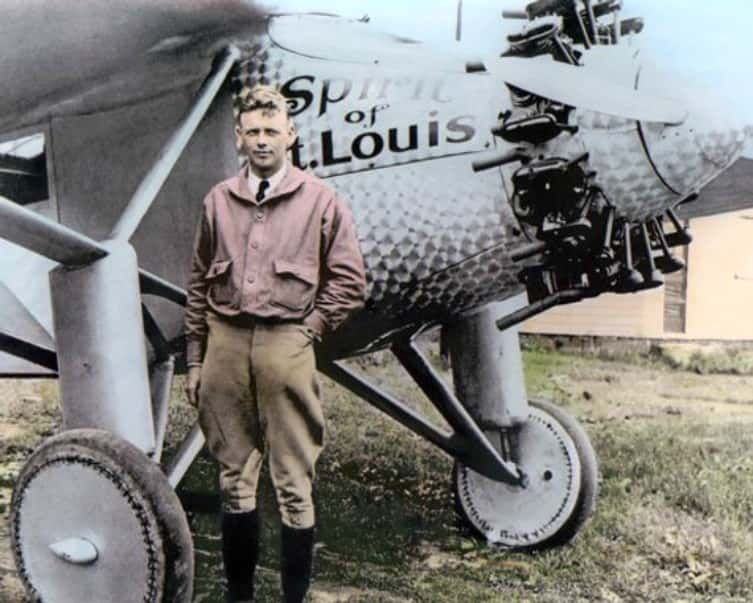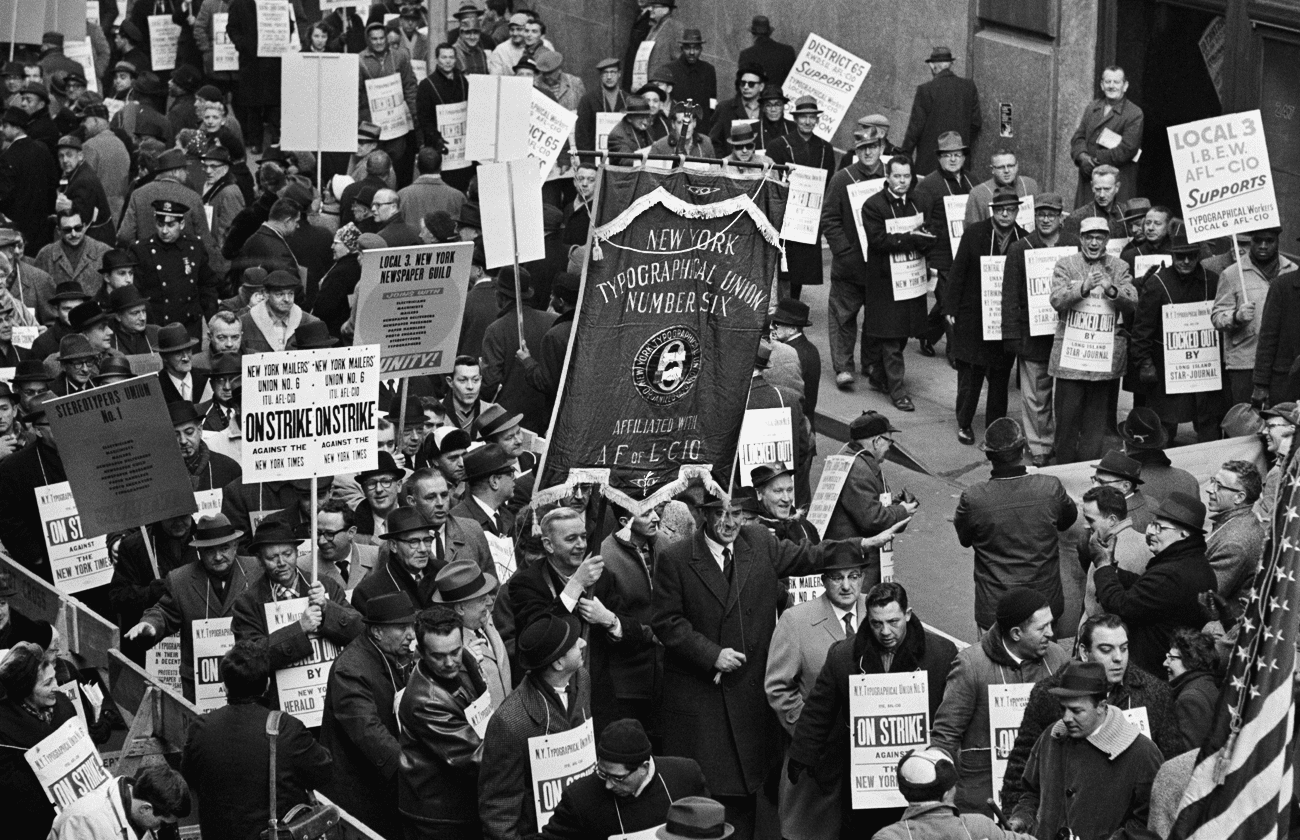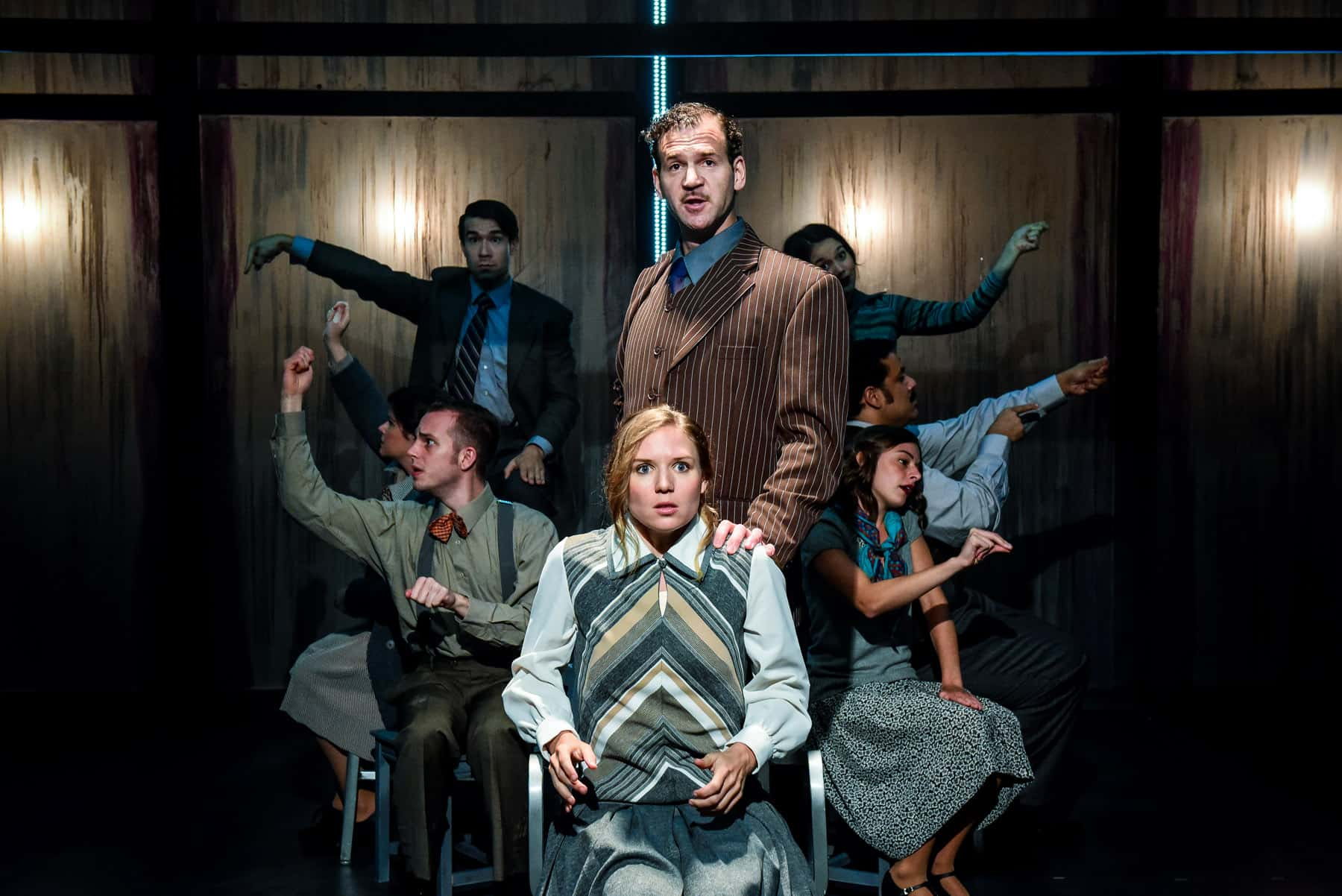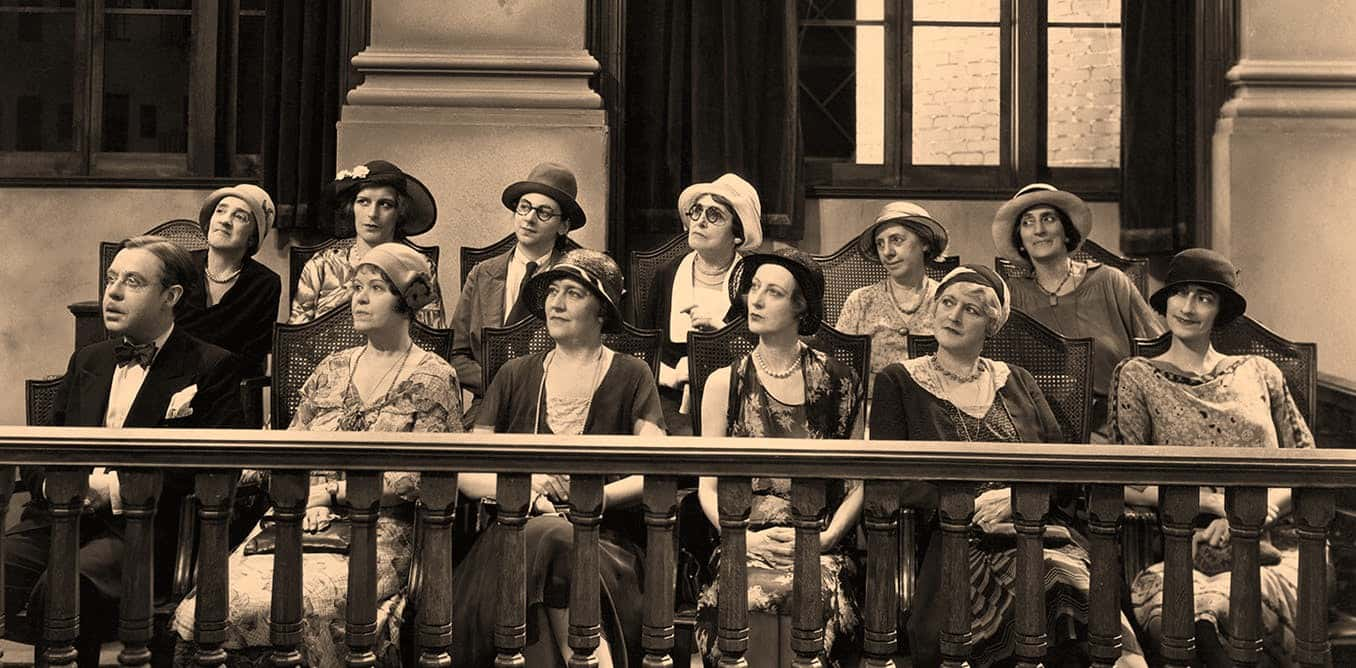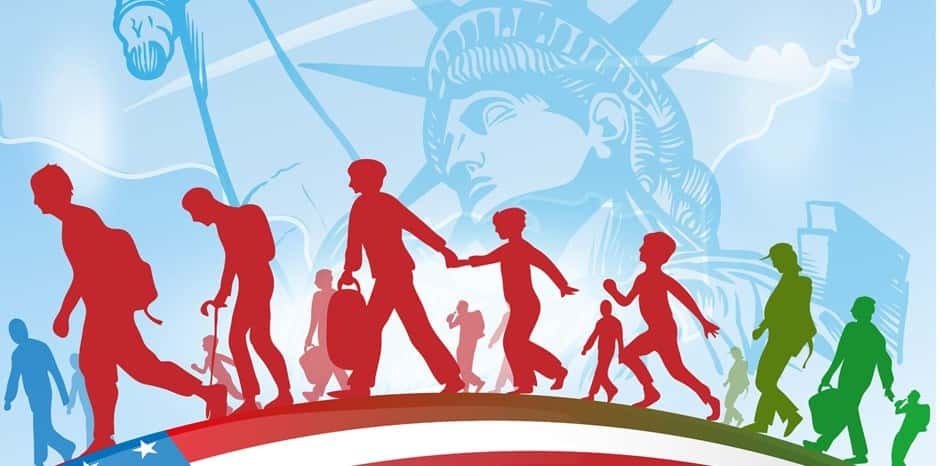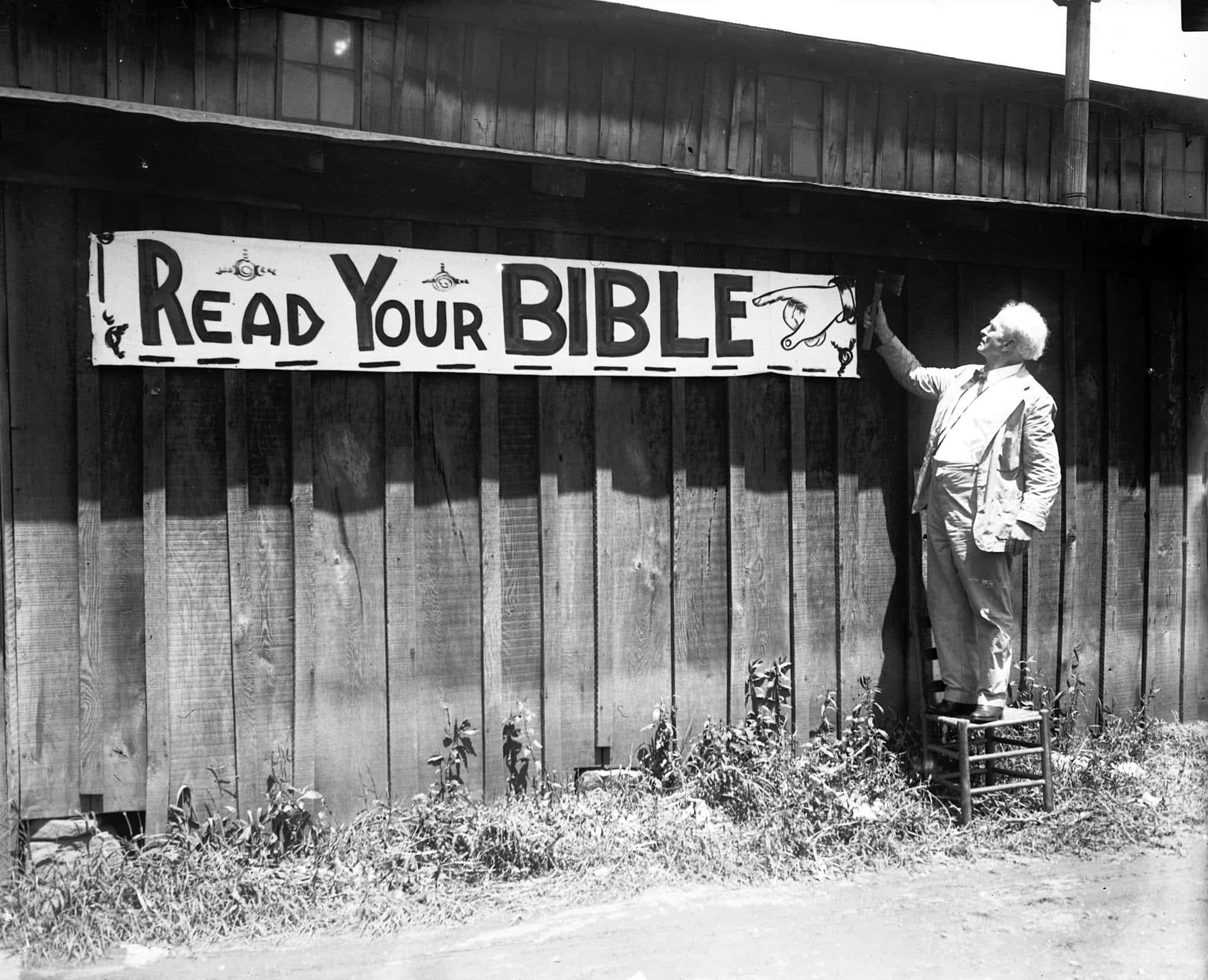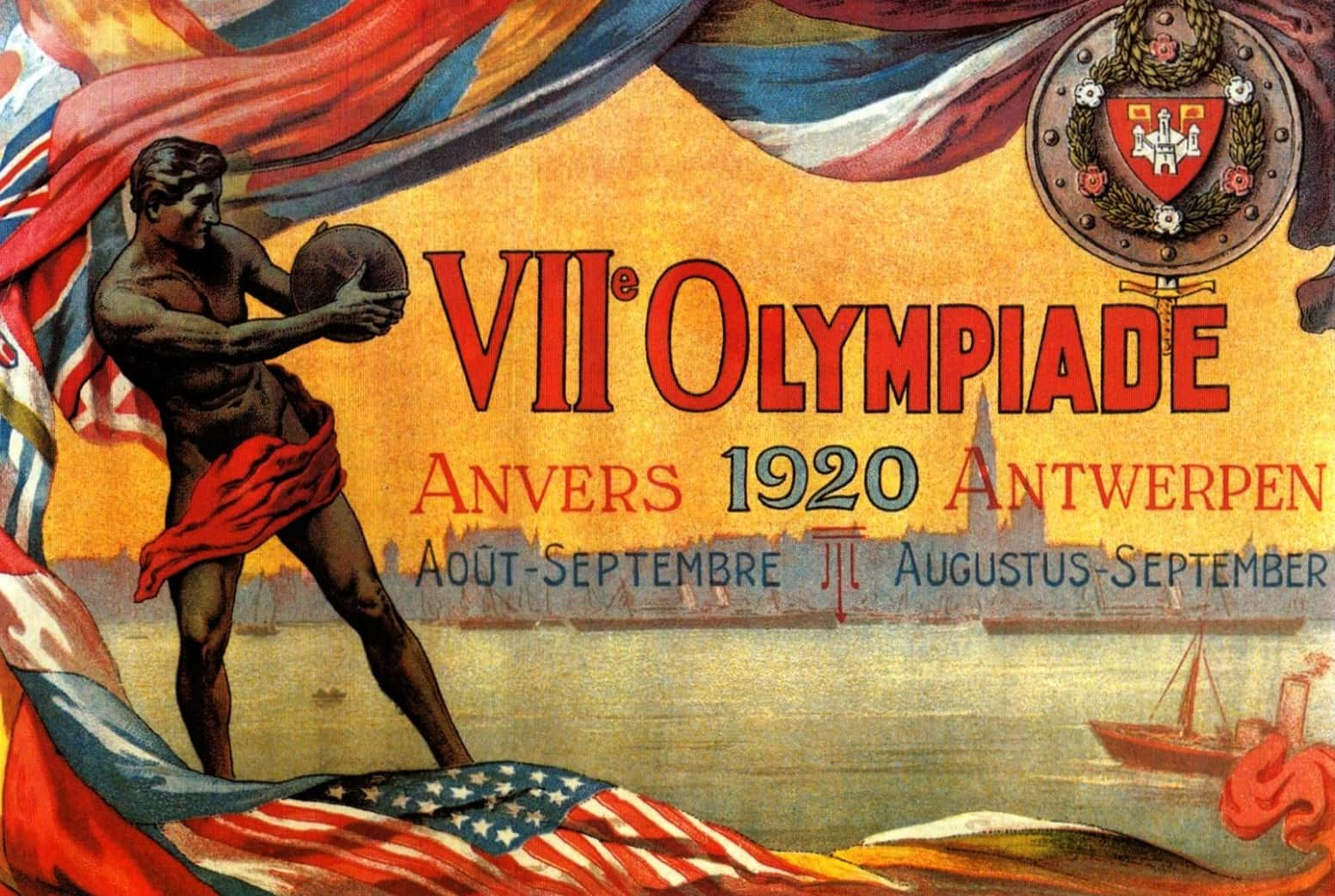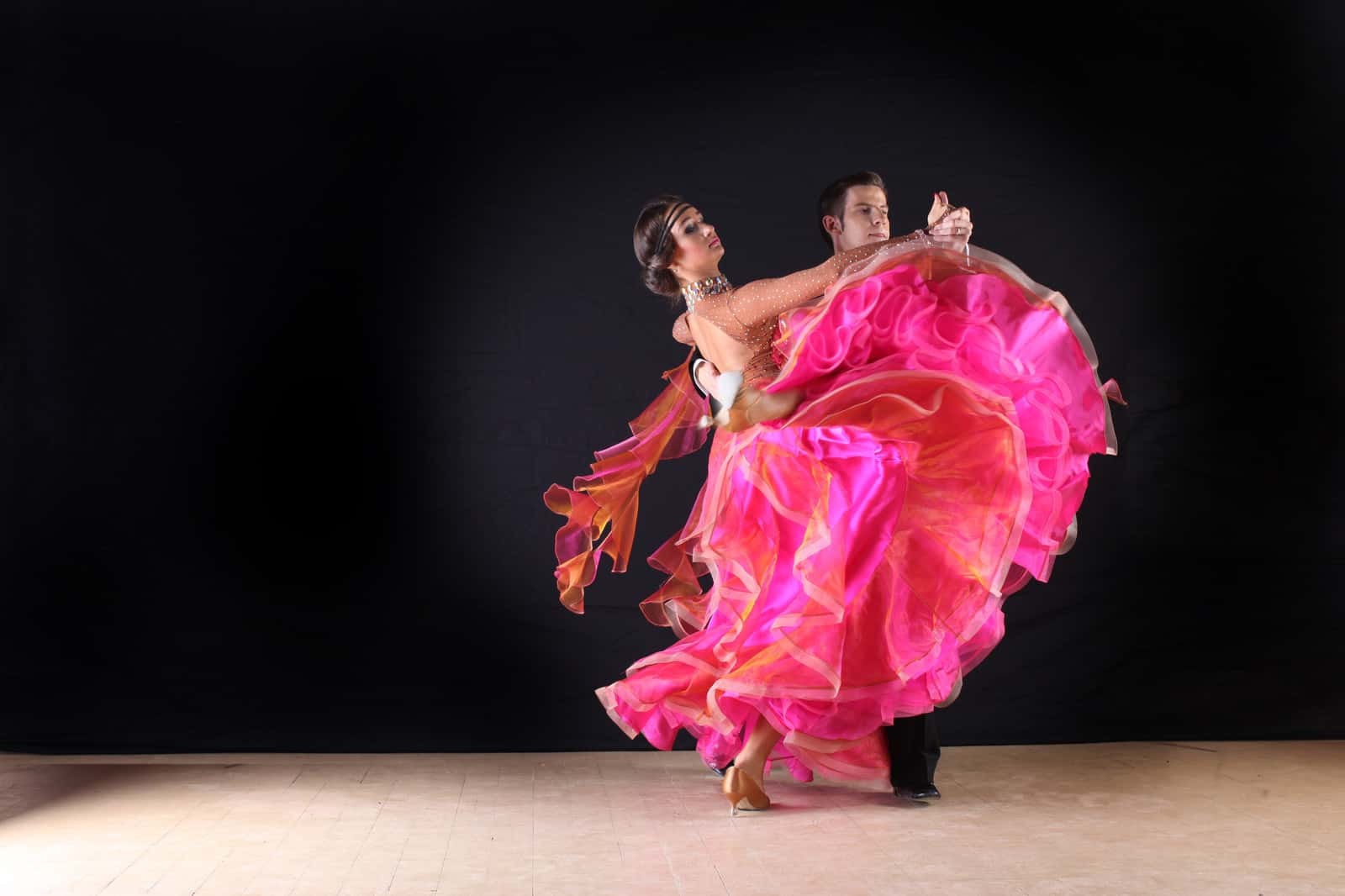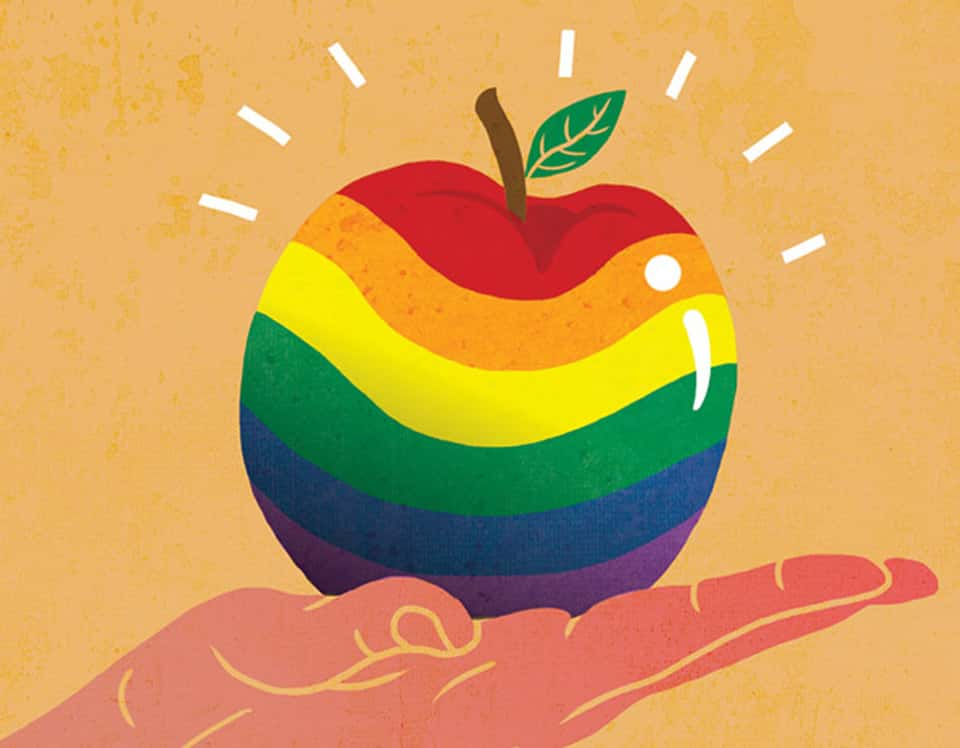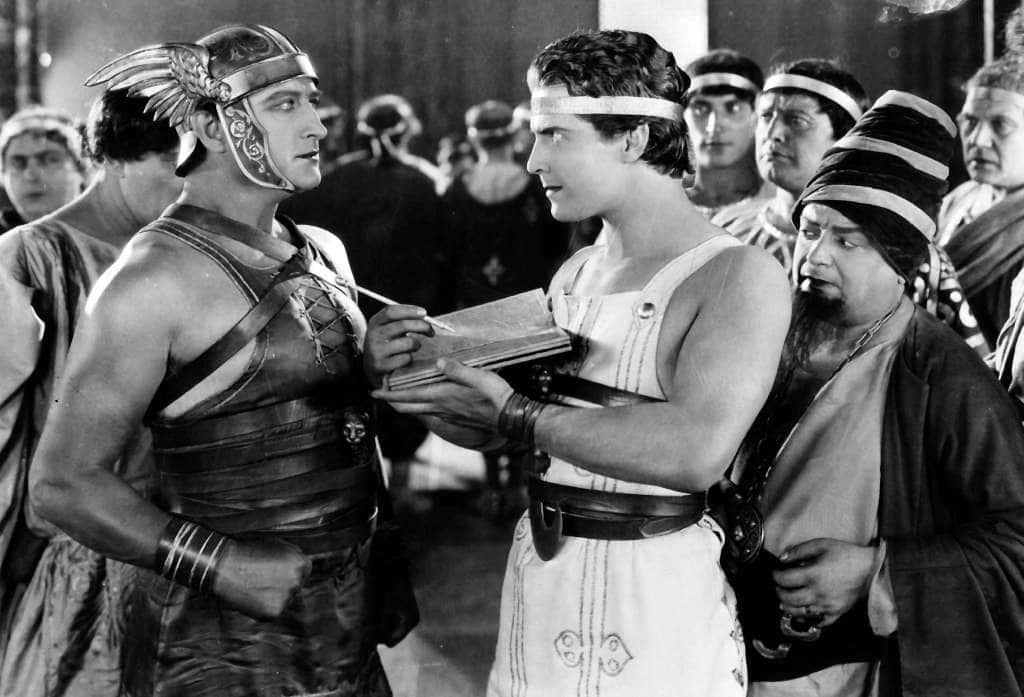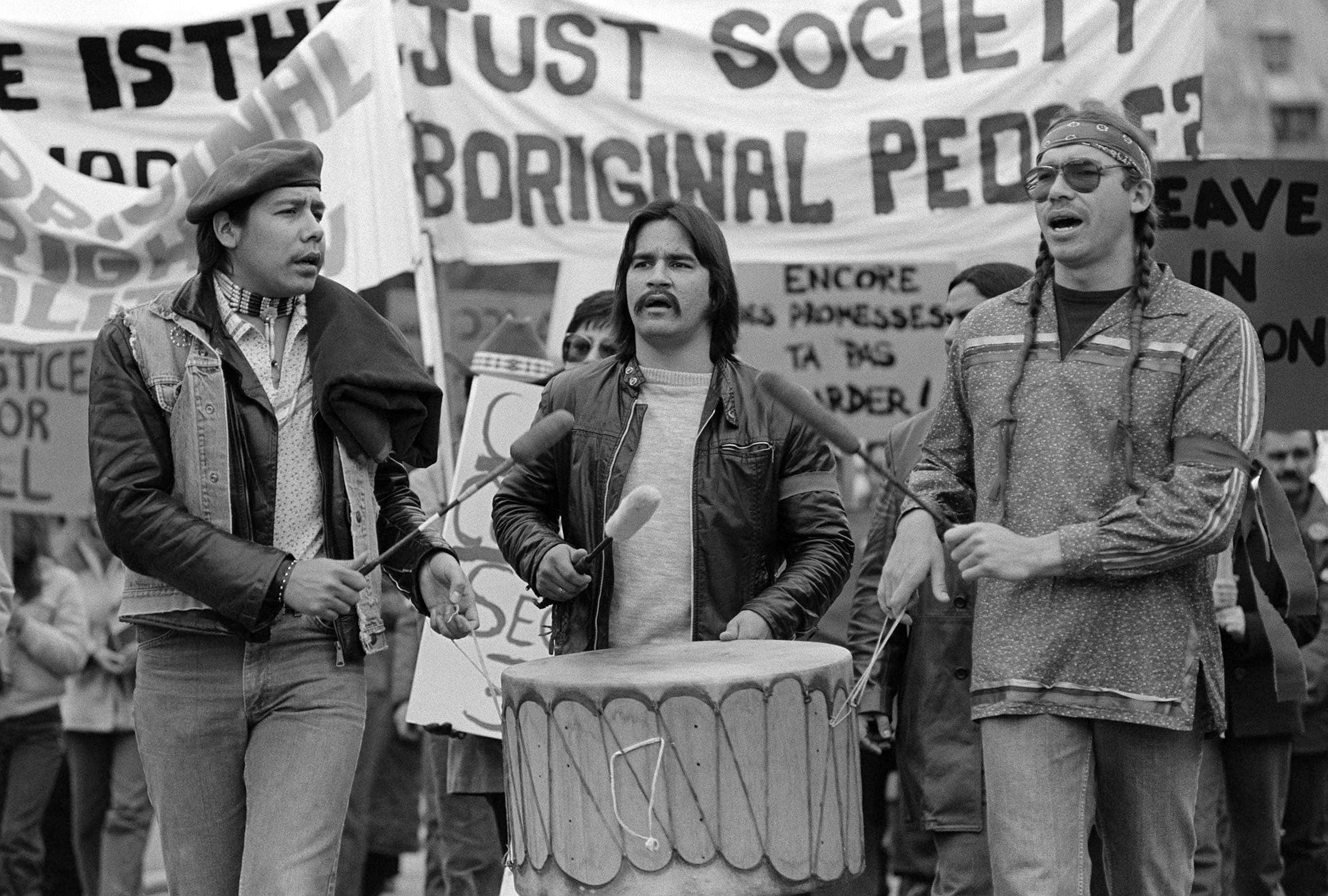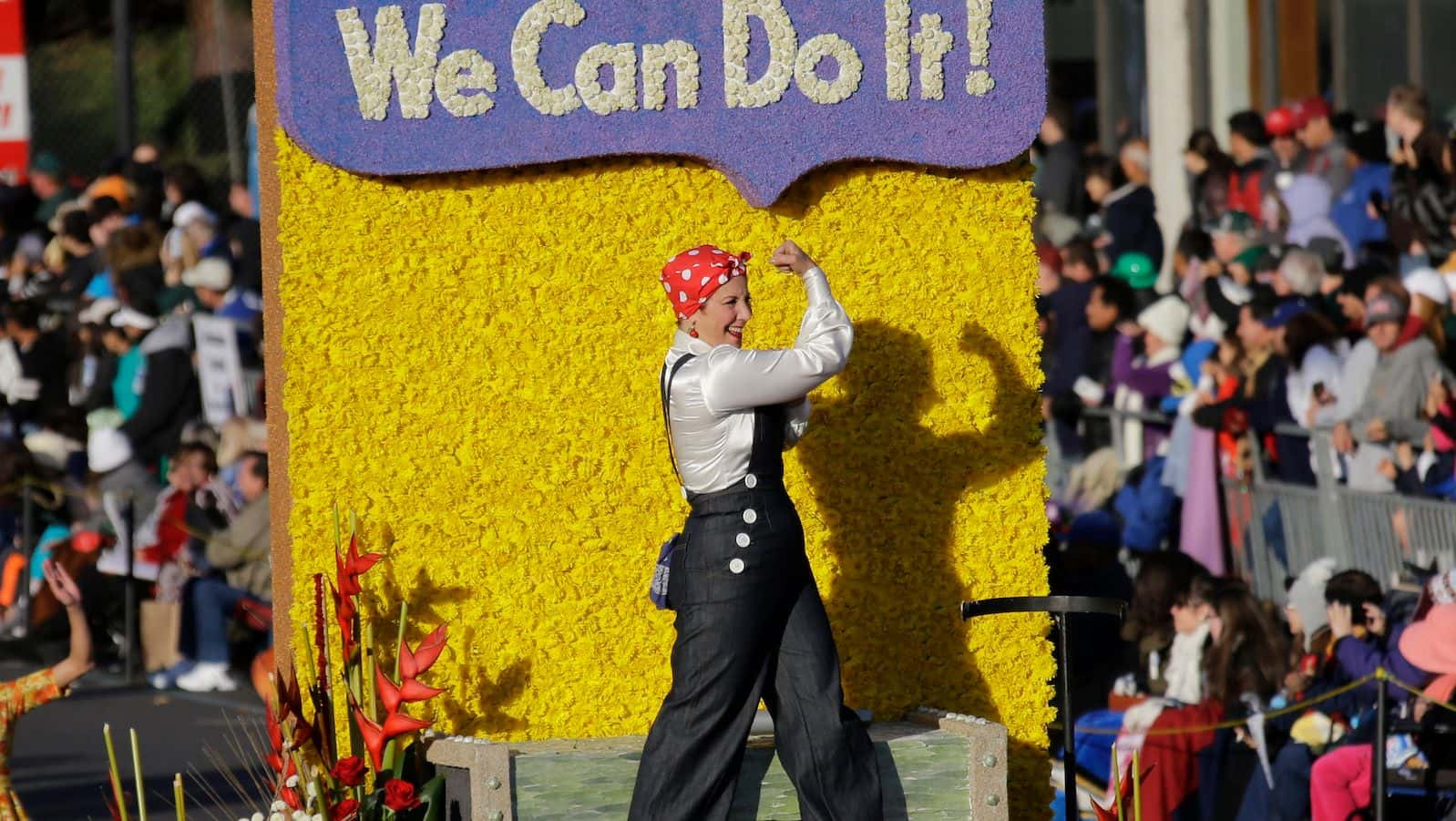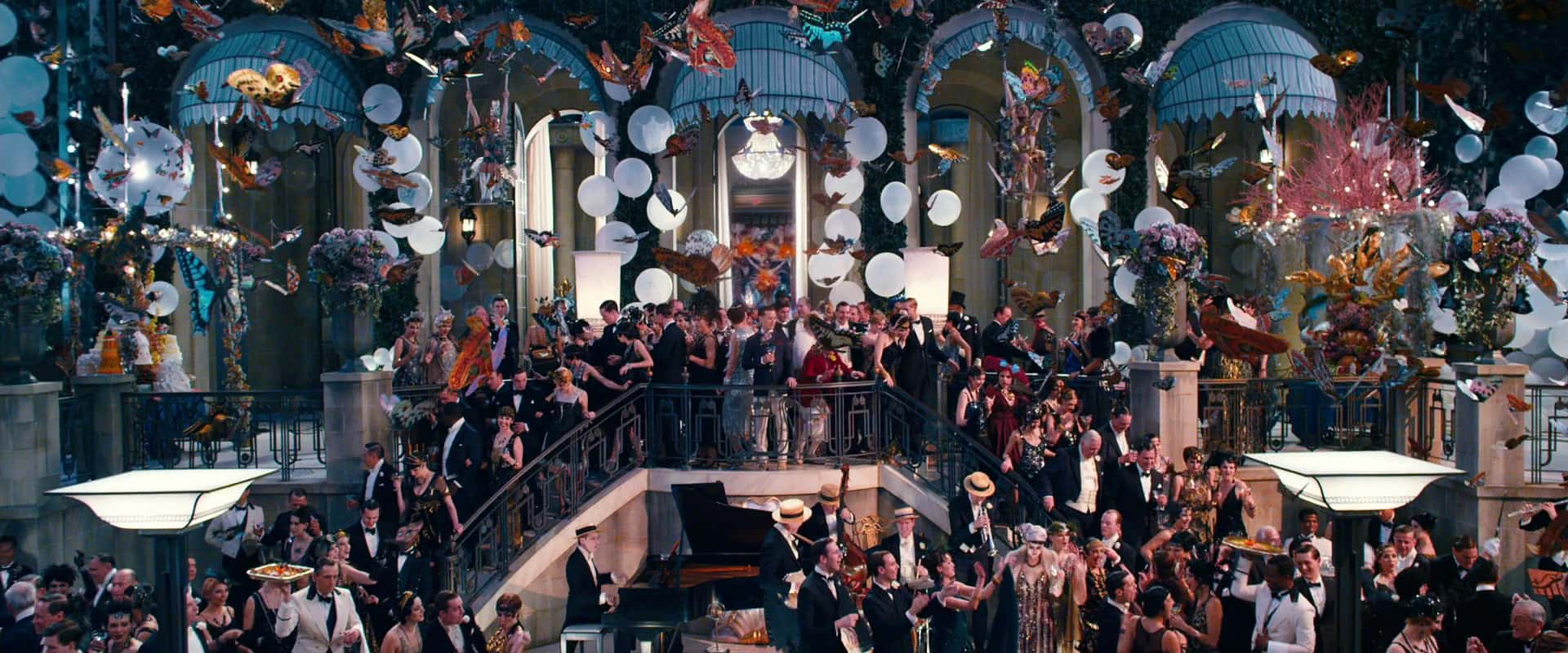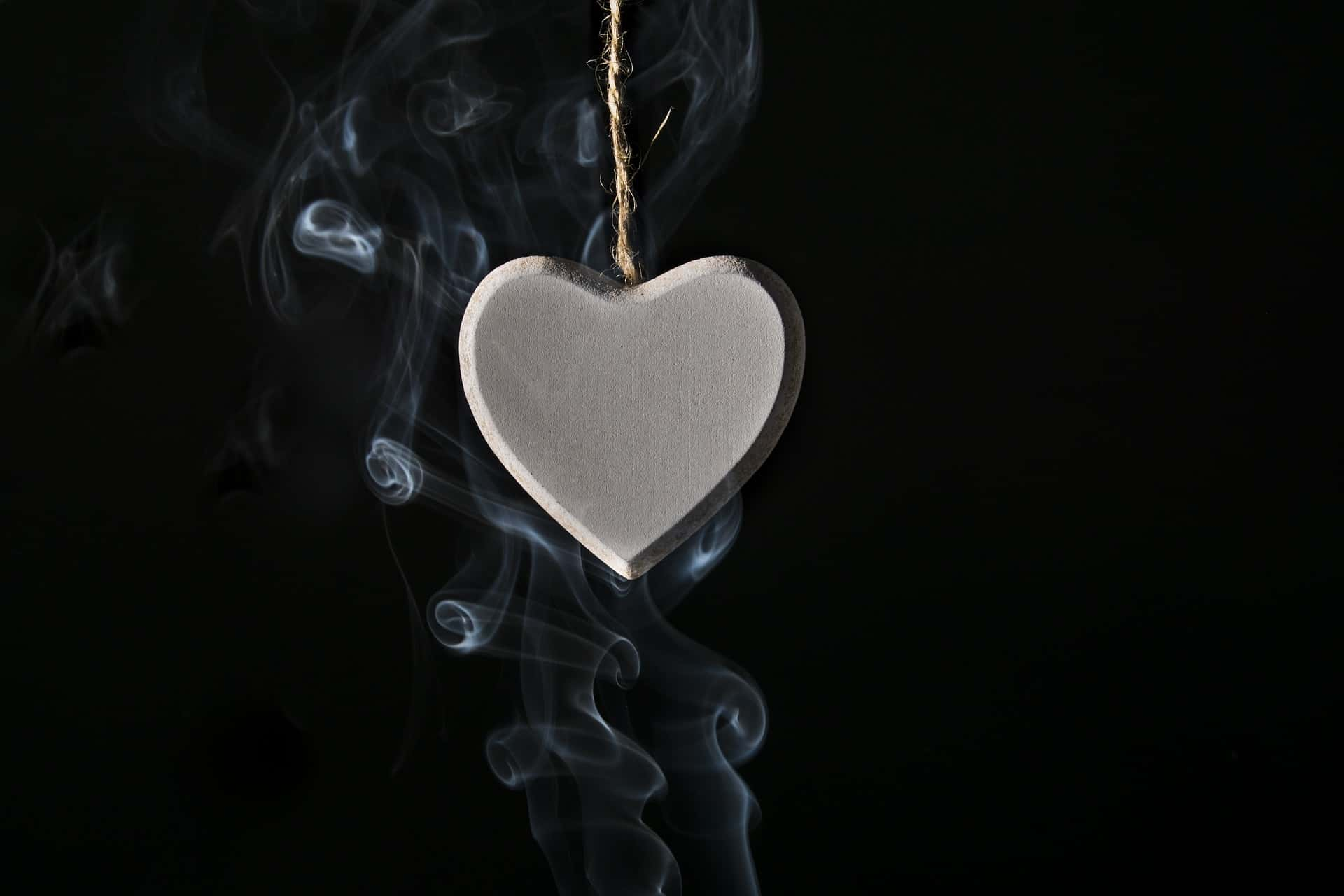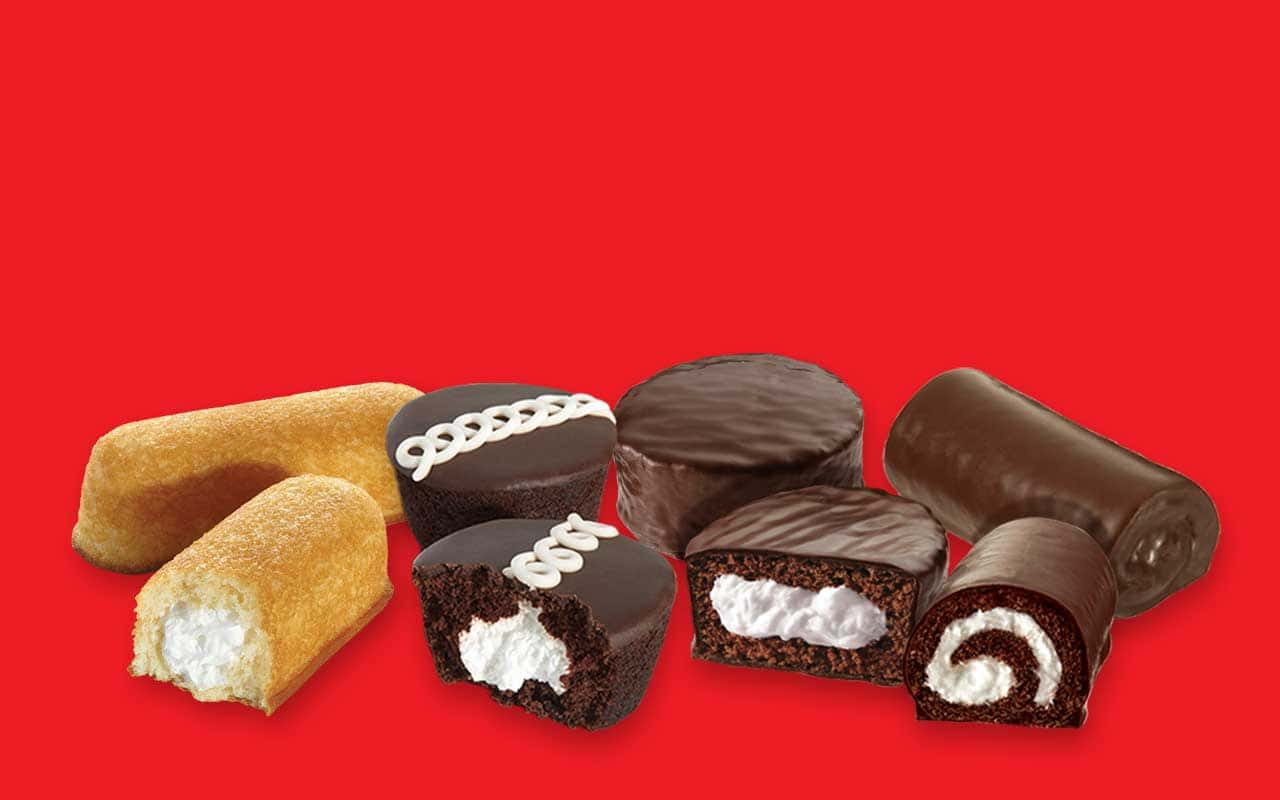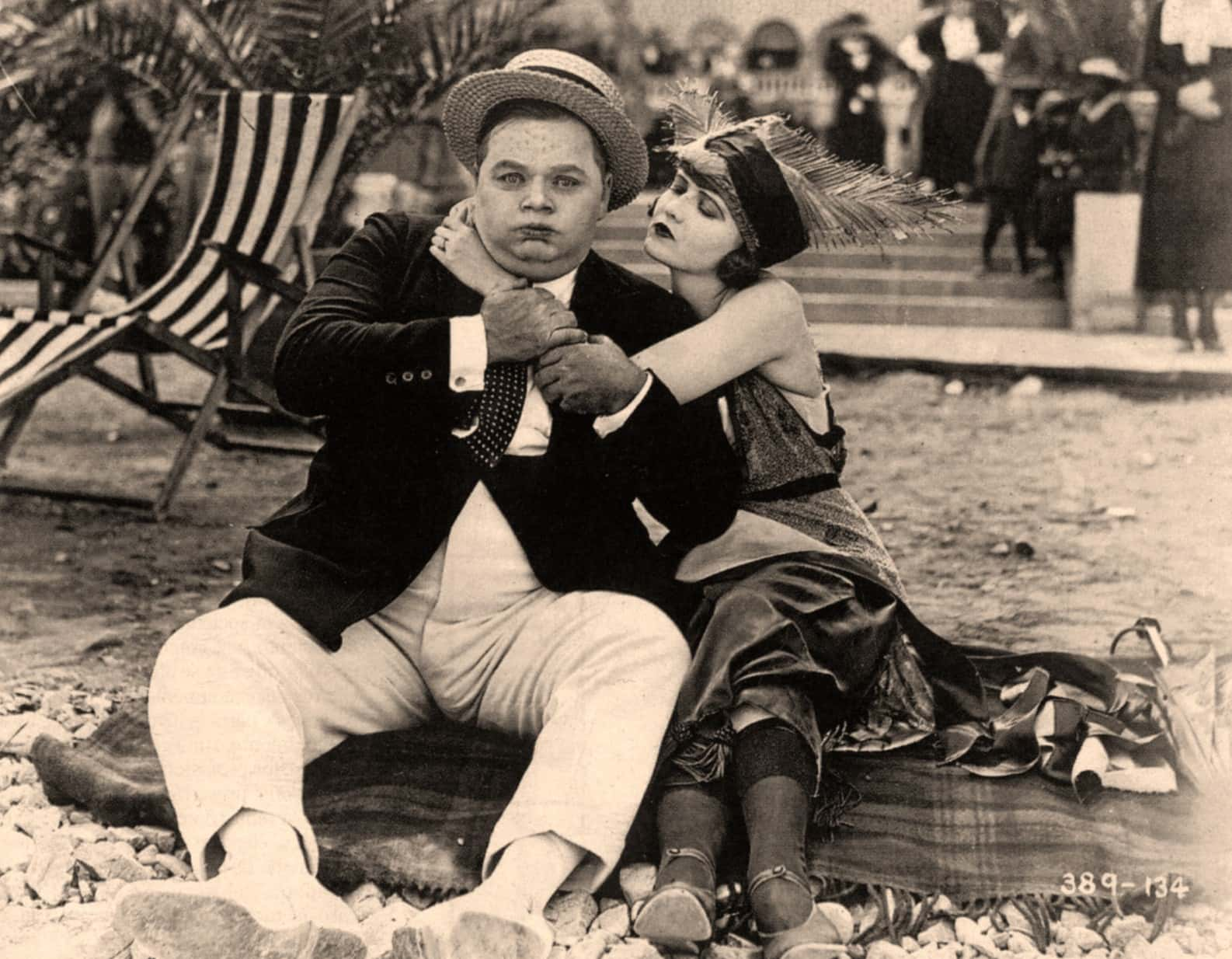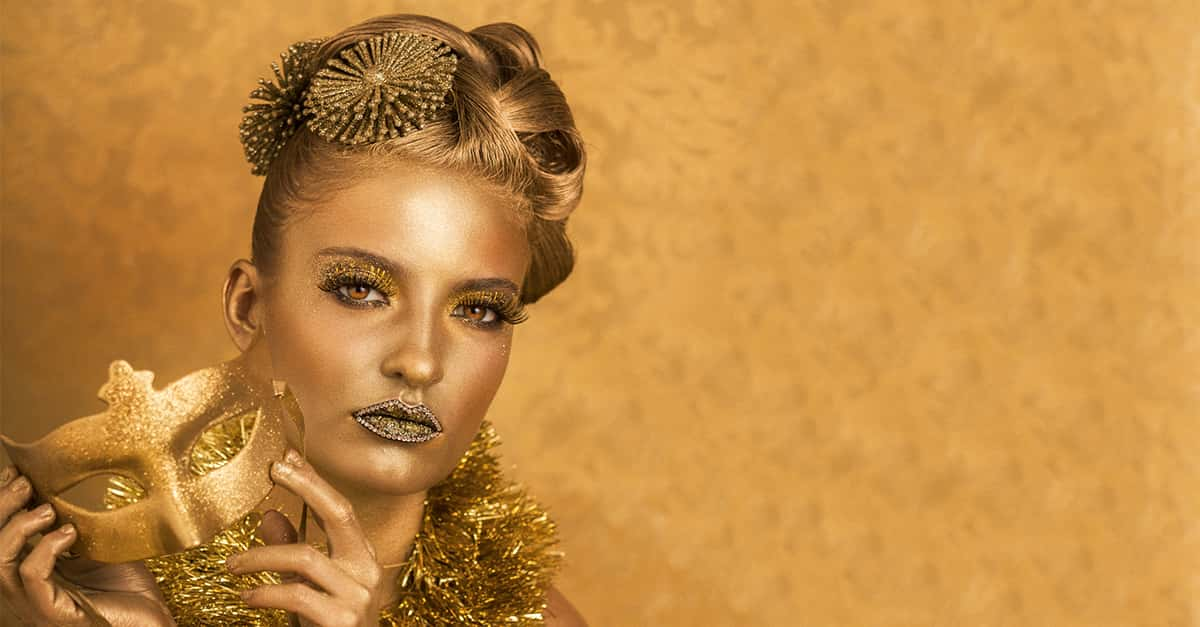"The Roaring Twenties were the period of that Great American Prosperity which was built on shaky foundations."—J. Paul Getty
During the 1920s, much of North America and Western Europe underwent an economic boom after the First World War. The prosperity helped fuel many industrial and technological advances. The arts flourished too, even as the ‘Roaring Twenties’ broke from tradition to embrace new and novel styles and trends. It’s a time period which has gone down in pop culture history as one big jazzy party. But what else was there to this era? Here are 43 landmark facts about the roaring twenties.
Roaring Twenties Facts
43. Keep Building!
One contributing factor that made the Twenties roar was the increased economic power of the middle class. Mass production allowed greater supply for a greater demand, leading the automobile, film, radio, and chemical industries to hit never-before-seen levels of success.
42. Self-Fulfilling Prophecy
To accommodate all the new cars being built, the 1920s oversaw a mass construction of roads, highways, and bridges to give motorists more places to drive. You might be wondering where all the money came from to fund all this road-building. Turns out, it came from the tax money which the local and state governments made from all that gasoline being sold!
41. Let’s Go to the Movies
As far back as the 1910s, the emergence of cinemas competed with the older vaudeville shows which had been the hugest source of entertainment before movies came along. Of course, the one disadvantage which kept films in check was the fact that they were all silent, giving vaudeville shows an advantage. However, that changed when the first films with sound emerged at the end of the 1920s.
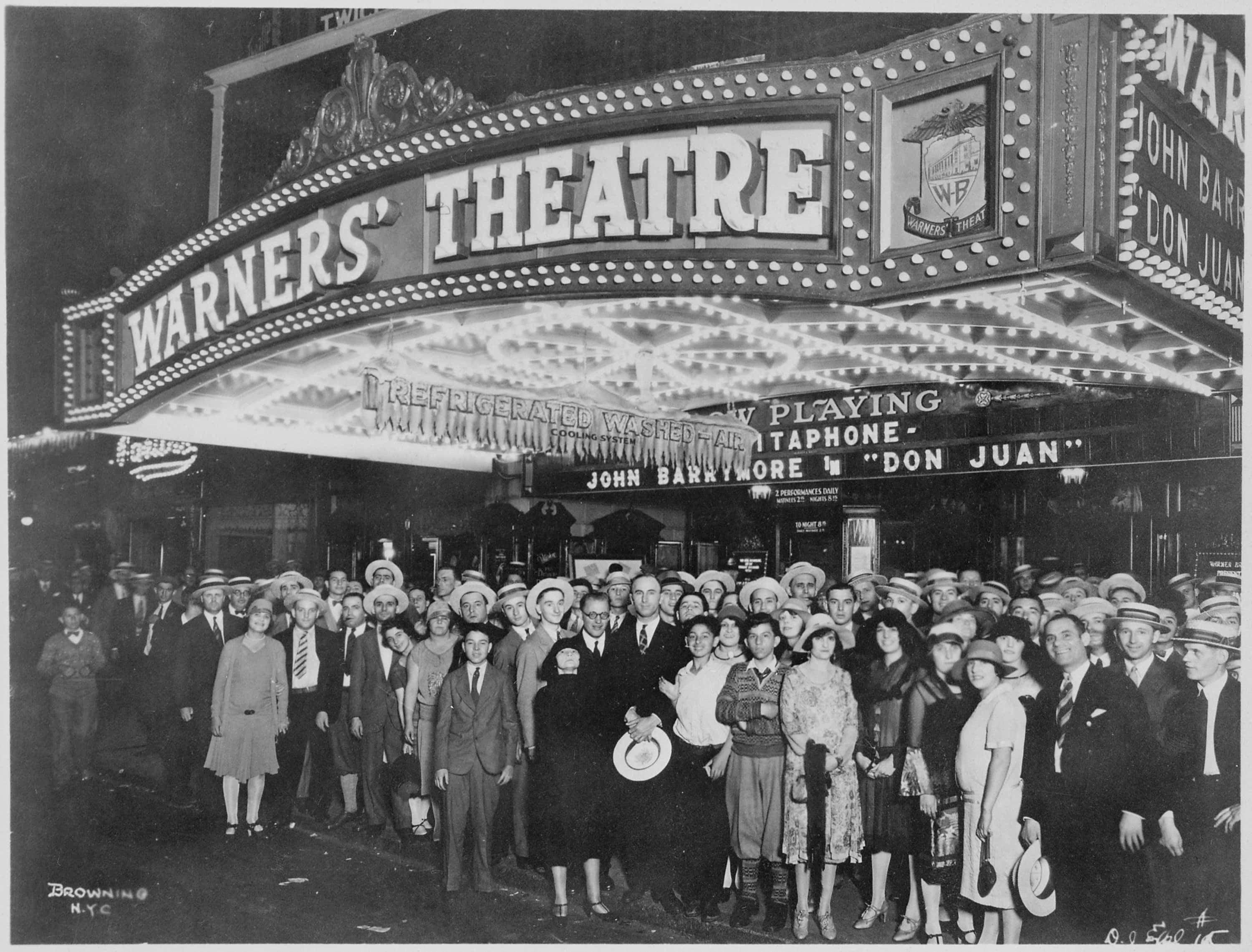 Wikimedia Commons
Wikimedia Commons
40. First Round’s on Me!
For all the partying that people supposedly did in their free time, it was straight up illegal to have any booze to go with all that dancing and fun. From 1920 to 1933, the production, importation, sale, and transportation of alcoholic beverages was banned across the United States. This was known as Prohibition, brought about by a union of various religious and social groups working together to put an end to alcoholism and all the problems related to that condition. It came about just in time to stop people from celebrating the end of the First World War.
39. The Empire Business
Of course, if there’s a nationwide ban on alcohol but people want to keep partying, you end up with criminals getting filthy rich by smuggling alcohol into the United States from Canada.
38. With Canes a’Shaking
Alcohol wasn’t the only thing that angered religious groups about 1920s society. They saw a lapse in Christian morality across the board, and furiously decried such sinful things as jazz music, changing fashions, and Hollywood movies which challenged rules on what you could show on a screen.
37. Take Me Out to the Ball Game…
Arguably the most famous athlete of the 1920s was baseball legend Babe Ruth, also known as the Bambino. Ruth fascinated and enthralled with his incredible talent for home runs, setting new records which weren’t broken for decades afterward. Ruth’s high-profile lifestyle only drew more attention to himself, beginning a dynasty for the New York Yankees.
36. Illicit Stockpiles
Critics of Prohibition emerged even as it was first being passed into law. One issue which arose was that Prohibition did nothing to make the consumption of alcohol illegal, so before it went into law, rich families bought up all the alcohol they could so they could keep enjoying their spirits legally. As early as 1925, renowned journalist H.L. Mencken famously quipped “Prohibition worked best when directed at its primary target: the working-class poor”.
35. The Calm After the Storm
In Europe, the end of the First World War was seen as a victory for liberalism. Germany’s militaristic regime had been defeated and broken, giving way to a more liberal government as they paid reparations. The nations of Europe drifted towards such liberal themes as "cultural pluralism, religious and ethnic toleration, national self-determination, free-market economics… and responsible government” among others. The biggest challenge to these attitudes was the rise of Communism in Russia, even as Marxists sought to bring the revolution to the rest of Europe.


History's most fascinating stories and darkest secrets, delivered to your inbox daily.
34. Medical History is Made
In 1928, Scottish scientist Alexander Fleming discovered that a petri dish in his lab had been accidentally contaminated. A growth of blue-green mold had appeared on the bacteria sample, preventing it from growing. This led Fleming to the discovery of penicillin, used around the world today to save thousands of lives from deadly infections.
33. Followers of Fashion
The Roaring Twenties was a time when women’s fashion finally allowed for more comfortable clothes to emerge, though the process was slow. The fashion which has become synonymous with the 1920s is the flapper girl outfit, which flattened women’s busts and showed off legs under short skirts.
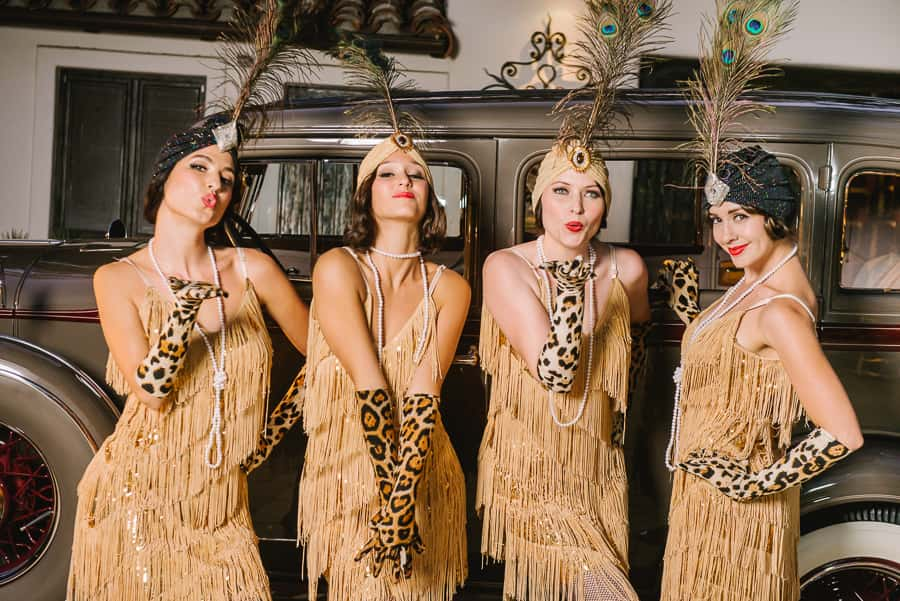 dinosauriens
dinosauriens
32. Who’s Writing About those Athletes?
With the exploding popularity of watching sports in public, there emerged a new field of journalism to cover the various sporting events. Sports journalists like Damon Runyan and Grantland Rice were at the forefront of this new writing style, becoming part of a legacy which expanded in the decades since.
31. Prove it in Court!
A popular myth from the Prohibition era is that Joseph P. Kennedy Sr., the patriarch of the Kennedy clan that would take over politics in the 1960s, got his start by bootlegging alcohol. Unfortunately, while several gangsters from the time claimed to have worked with Kennedy, there’s no evidence beyond hearsay.
30. My Heart Flew Over the Ocean
Flying for 33.5 hours in a single-engine airplane called the “Spirit of St. Louis,” American aviator Charles Lindbergh became the first pilot to accomplish a non-stop, solo flight across the Atlantic Ocean. He made this extraordinary first in 1927 and was awarded the French Legion of Honor and the Distinguished Flying Cross.
29. For the Union Makes Us Strong!
Although labor unions in the United States had enjoyed a huge increase in power and numbers during the First World War, this changed dramatically during the Roaring Twenties. While a total of four million workers had taken part in over 3,500 strikes in 1919 alone, the federal government clamped down on unions during the 1920s. This was helped by anti-union sentiments of the time, as well as the economic prosperity robbing unions of their membership.
28. Cell Block Tango
In one of the most shocking crimes of the decade, Ruth Snyder plotted with her lover, Henry “Judd” Gray, to murder her abusive husband, Albert. Snyder bought a double indemnity life insurance policy on her husband, and on March 20, 1927, she and Gray murdered him before staging a robbery. However, the staging was poorly done, and the authorities arrested the culprits. The media of the time had a field day with the rare instance of a woman committing such brutal murder, even as Snyder and Gray executed in the electric chair in 1928.
27. Pretty Sure I’m Overqualified…
After finally getting the right to vote in the aftermath of World War I, women also began entering the legal industry, getting degrees to work as lawyers. However, there were plenty of barriers placed in front of them before they could practice. Law firms were legally permitted to turn women away, and otherwise, they would just hire them to be secretaries or stenographers.
26. We Want to Reach a Verdict!
If that wasn’t enough, women weren’t allowed to serve on a jury in the United States, though this slowly changed during the 1920s. By the end of that decade, 24 states allowed women to serve jury duty. The last state to hold out was Mississippi, which finally gave in to equal opportunity in 1968.
25. Birth of the Teenager
Due to the greater access to automobiles, adolescents could get up to more shenanigans due to increased autonomy and less supervision. While the actual word "teenager" didn’t get invented in the 1920s, the teenage shenanigans we’ve all become accustomed to first emerged in the Roaring Twenties.
24. More Proof that Racism is Irrational
Sadly, many Western nations spent the 1920s adopting anti-immigration policies to prevent unwanted ethnic groups—especially Asians—from immigrating. People of European background were favored when it came to immigration policies, while Hispanic populations were unaffected by the limitations.
23. How Dare You Educate Those Children!
In the 1920s, the question of evolution being taught in schools was famously put on trial. In the Tennessee town of Dayton, John Scopes was a teacher who defied a Tennessee law forbidding evolution to even be discussed in a classroom, since it contradicted the Bible’s teachings. Scopes was promptly arrested for this, but if the authorities thought that was the end of it, they would be very mistaken.
22. Inherit the Wind
In 1925, John Scopes’s trial attracted two prominent lawyers on opposite sides of the issue, as well as hundreds of spectators eager to see which side would emerge victorious. The prosecutor was William Jennings Bryan, advocating that the theory of evolution was a threat against the Bible, which he believed should be read literally. The defense attorney was Clarence Darrow, an agnostic who pointed out the inconsistencies in the story of Genesis.
21. Do You Call That a Pyrrhic Defeat?
As it turned out, the "Scopes Monkey Trial," as it came to be known, resulted in Scopes losing the trial and being fined $100 for violating the law. The law lasted another 42 years, with evolution being kept out of textbooks in Tennessee until the 1960s. However, Clarence Darrow gained a small victory for his side by having the scientific evidence for evolution publicized.
20. Carry the Torch Forward!
The Olympic Games were held three in the 1920s; in 1920, they took place in Antwerp, the 1924 Games were held in Paris, while the 1928 Games were hosted by Amsterdam.
19. I Tip My Hat to That
When it came to men’s fashion in the 1920s, there were very clear choices for people based on what class they were in. One aspect of this was hats. High-class men were expected to wear top hats or homburg hats. Middle-class men usually went with bowler hats, fedoras, or trilby hats. The lower-class men could be identified by the flat caps or newsboy caps they had on their heads.
18. Satan in the Dance Hall!
The Roaring Twenties oversaw a peak in the popularity of the dance club. Popular music was entirely dominated by tunes that people could move to, using dances like the foxtrot, American tango, Charleston, and the Breakaway. It was an age of innovation, with new dance moves emerging to replace the older kinds. Despite the anger of more conservative, religious groups, the dance crazes couldn’t be stopped.
17. A Liberal Time for Liberal Lifestyle
Despite what some might have thought, the 1920s were an improvement in the tolerance towards people who identified as LGBTQ. Communities developed in large cities like London, Paris, Berlin, New York, and Rome. Some people have speculated that one reason for this change in attitude was due to the homosocial comradeship that occurred between men during the First World War, the experience of which allowed men to have close relationships with other men which didn’t threaten their masculinity.
16. Safely Something Other Than Straight
This stronger acceptance of the LGBTQ community can be seen in the movie stars who lived openly out of the closet without risking their careers. William Haines and Ramon Novarro were both openly gay men while also being top box office movie stars of their time.
15. There’s Always a Pushback…
Unfortunately, there was always a large portion of the population which still regarded the LGBTQ communities with disgust and loathing. Mae West’s provocative and progressive play—titled The Drag—was a huge success, but was also subjected to protests and criticism. This type of negative feedback increased during the 1930s, forcing people to hide their sexuality in the name of preserving their careers.
14. Did We Check the Lost & Found?
One notable term which rose to prominence during the 1920s was the “Lost Generation.” This term referred to that generation which grew up during the First World War and was left directionless and wandering in the aftermath of that devastating conflict. The term was coined by renowned American writer Gertrude Stein and popularized by her protégé, Ernest Hemingway, especially with his book The Sun Also Rises.
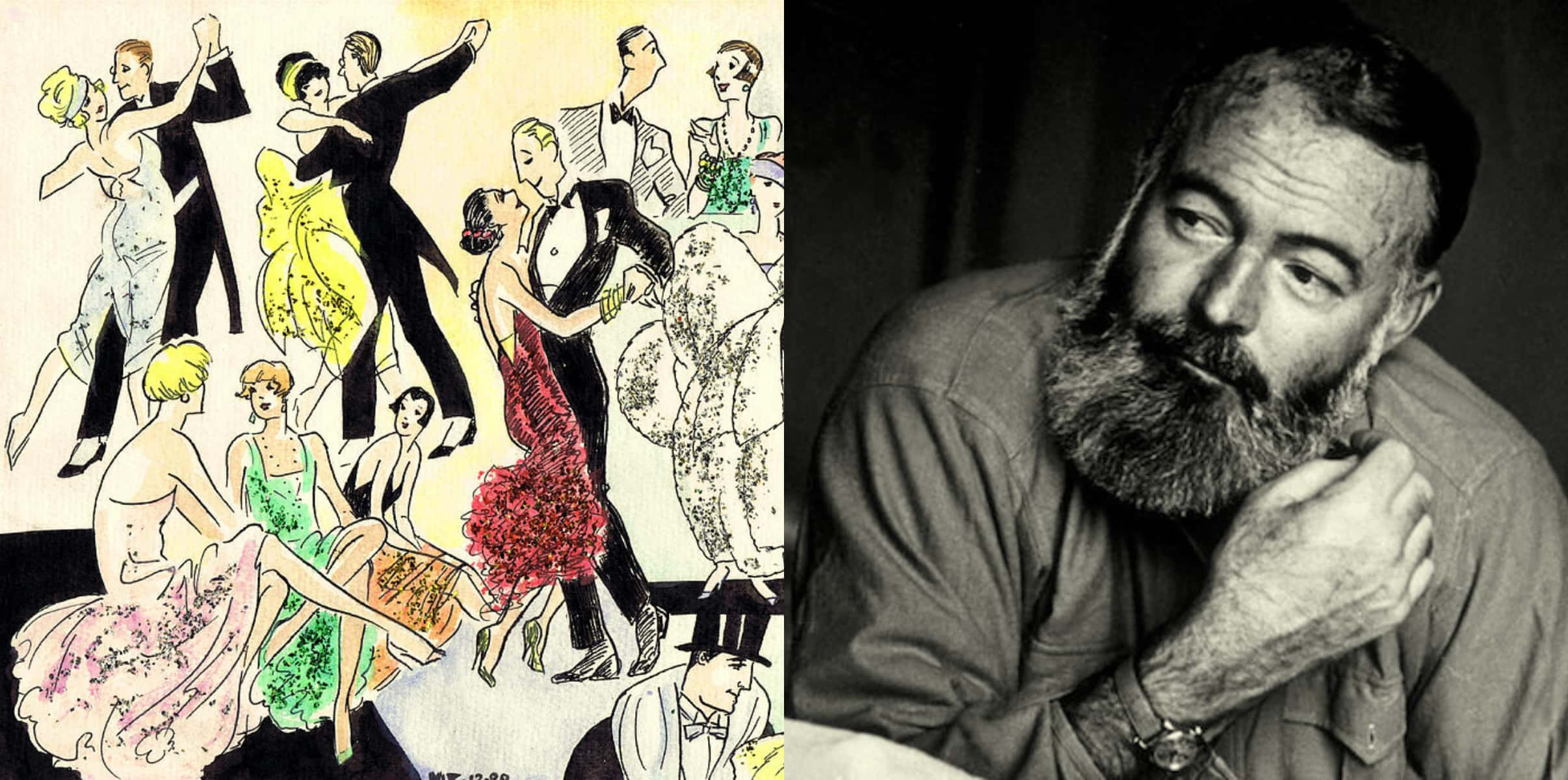
13. Midnight in Paris
While the Lost Generation was a term used to describe all kinds of people, it is often used when discussing those Americans, chiefly Hemingway and Stein, who left the United States after the First World War to live in Paris. Many American writers were disillusioned with the US and felt excessively hampered by censorship, something that Europe was more lax about.
12. Might as Well Call Us Bitter Too
Lost Generation writers like Sinclair Lewis, F. Scott Fitzgerald, and Ernest Hemingway had similar themes running through their work. There was a strong sense of disillusionment after the war, as well as a dislike for the aimless debauchery inherent in the extreme lifestyles of high society types. This also tied in with the death of the American Dream—which seems to have died more times than it’s ever been born.
 youtube
youtube
11. We’re Too Successful!
In Canada, much of the 1920s politics was left in the hands of Prime Minister William Lyon Mackenzie King, whose Liberal party was busy paying off large debts left over from World War I. Meanwhile, the prairie provinces struggled due to dropping wheat prices in the face of a huge wheat surplus.
10. Call Us the PPC
The struggles of farmers in Canada led to a new, third political party to challenge the traditional Liberal and Conservative parties. The center-left Progressive Party of Canada was so successful for a time that it came second in the 1921 national election. However, they did not survive the decade, dissolving in 1930. Another federal party which stood left of the Liberals would later emerge in Canada’s history, existing today as the New Democratic Party.
9. New York, New York
Despite the hardships the community faced, African-American literature and music underwent an incredible development during the 1920s. Much of this development originated in Harlem, where so many artists and writers among the many black migrants who settled in Harlem from all around the US. While it was called the "New Negro Movement" at the time, it’s been since renamed the "Harlem Renaissance."
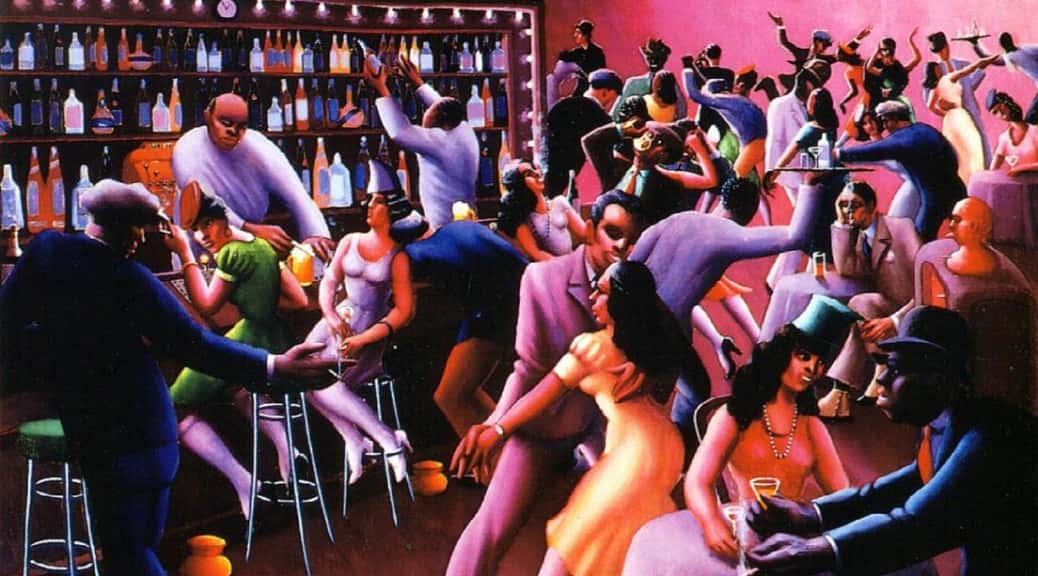 wdkx
wdkx
8. For Your Own Good! Look How Awful the Men Are!
During the First World War, many women had entered the workforce as a necessity to keep the economy rolling normally. While 1920s society couldn’t stem the flow of working women, it certainly tried. In the name of protecting women’s behavior from negative male influence, "protective laws" were issued in the United States which prohibited women from taking jobs which were deemed too dangerous or unladylike.
7. I Can’t Even Join My Own Club?
After the First World War, several world leaders, including US President Woodrow Wilson, envisioned a way that the world’s nations would unite into a league to prevent another devastating war to create such catastrophic damage again. Formed in 1920, the League of Nations began with 42 members, including Britain, France, the Netherlands, China, Japan, and Brazil. However, slightly ironically, Wilson was unable to rally enough support in the US to join the League, and the Americans stayed out of it. The phrase “I wouldn’t want to belong to a club that would have me as a member” comes to mind.
6. Let’s Just Adjourn…
The League of Nations suffered from a number of problems. For starters, they remained a small group, never having more than 70 members at their peak and thus lacking true global representation. Not only that, the League was diffident in making big decisions and had organization issues. They also never had an armed force of their own which could intervene in a conflict. The League was splintered, and eventually dissolved completely by 1946, replaced with the United Nations.
5. Step into the Speakeasy
Prohibition may have closed down the pubs and bars of the United States, but they reopened underground almost overnight. Secret bars known as speakeasies were developed for everybody who wanted a safe place to drink in peace away from the prying eyes of the law. By 1925, up to 100,000 speakeasy clubs were said to exist in the state of New York alone!
4. Smoking Like a Sinner
Bizarrely, one of the big campaigns of the 1920s orchestrated in the name of women’s liberation had to do with the right to smoke cigarettes. Smoking was considered highly unfashionable and inappropriate for women. In the late 1920s, however, a campaign was launched by tobacco companies to link smoking with emerging feminism, labeling cigarettes as “Torches of Freedom.” A more cynical exploitation of civil rights campaigning there has not existed—we hope.
3. Anyone Hungry?
The Roaring Twenties saw an incredible number of brand-name foods emerge which still exist to this day. The long list includes Wonder Bread, Hostess Cakes, Wheaties, Kool-Aid, and Baby Ruth candy bars.
2. A Valentines Card Would Have Been Nice…
One of the men who rose to power in the criminal underworld during Prohibition was Al Capone. From 1925 onward, Capone fought viciously to make Chicago his domain. One of his main rivals was George “Bugs” Moran, and Capone ensured that Moran learned his place in a truly vicious way. On the Valentine’s Day of 1929, Moran’s main place of operations, a garage on Chicago’s’ north side, was raided by police. However, when seven men were lined up to be arrested, the police lining them up revealed themselves to be Capone’s men in disguise, who then fired no less than 70 rounds of ammunition at the seven men. The crime was never linked back to Capone, and he was never charged for it. The event’s been called the St. Valentine’s Day Massacre ever since.
1. Downfall of a Star
It was one of the most appalling scandals of Old Hollywood. Legendarily overweight actor and comedian Roscoe “Fatty” Arbuckle was staying in San Francisco on Labor Day in 1921. After a roaring party—again, showing how badly Prohibition failed to change things—a severely ill woman named Virginia Rappe was found in Arbuckle's room. What exactly happened next never became clear, but what we know for sure is that Rappe died and her friend accused Arbuckle of raping and murdering her. According to Rappe’s autopsy, her death was caused by a ruptured bladder, though the coroner found no evidence of rape. Though what exactly transpired was never determined, the sensationalist newspapers of William Randolph Hearst got a hold of the story and it caught fire, with each headline more shocking than the last. Arbuckle was acquitted of murder by the third jury at his trial, but his legal troubles cost most of his fortune, his career was destroyed, and he died of a heart attack in 1933.

